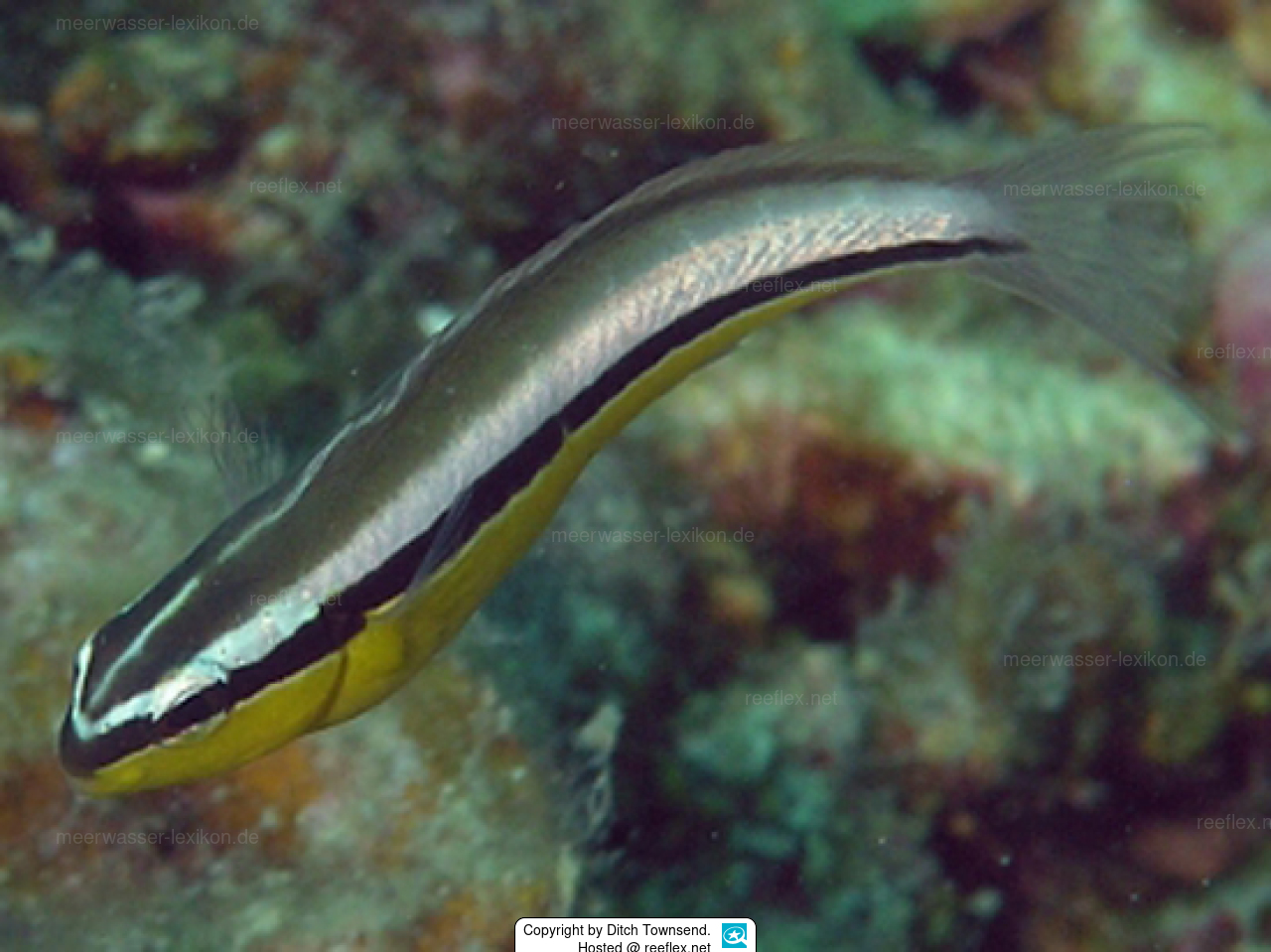Info
Very special thanks for the first photo of this Twin fangblenny to Ditch Towensebd, UK.
Adult fangblennies are usually found solitary in sheltered coastal reefs usually with the mimic Cardinalfisch Cheilodipterus zonatus (Smith & Radcliffe, 1912).
Its fishLarvae are planktonic, often found in shallow, coastal waters.
Depthrange: 1 to 15 meters.
Classification: Biota > Animalia (Kingdom) > Chordata (Phylum) > Vertebrata (Subphylum) > Gnathostomata (Superclass) > Pisces (Superclass) > Actinopteri (Class) > Perciformes (Order) > Blennioidei (Suborder) > Blenniidae (Family) > Blenniinae (Subfamily) > Meiacanthus (Genus) > Meiacanthus geminatus (Species)
Jumping guard
A jumping guard prevents (nocturnal) fish from jumping out.
Wrasses, blennies, hawkfishs and gobies jump out of an unprotected tank in fright if their night rest is disturbed, unfortunately these jumpers are found dried up in the morning on carpets, glass edges or later behind the tank.
https://www.korallenriff.de/en/article/1925_5_Jump_Protection_Solutions_for_Fish_in_the_Aquarium__5_Net_Covers.html
A small night light also helps, as it provides the fish with a means of orientation in the dark!







 Dr. Ditch Townsend, England
Dr. Ditch Townsend, England



























